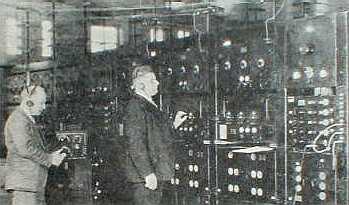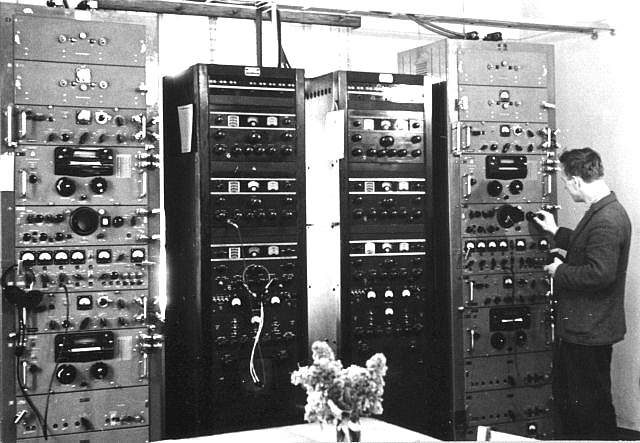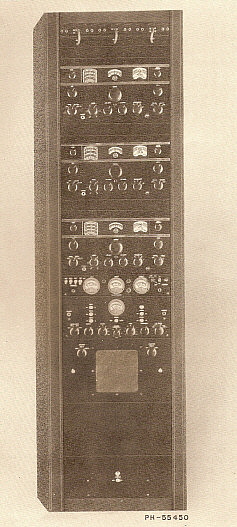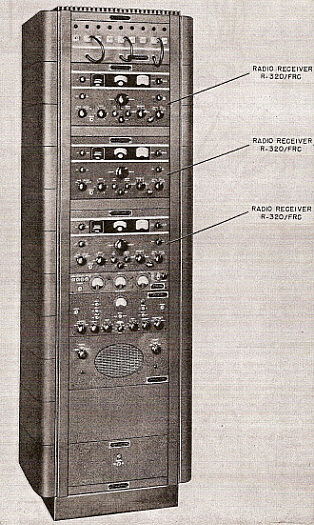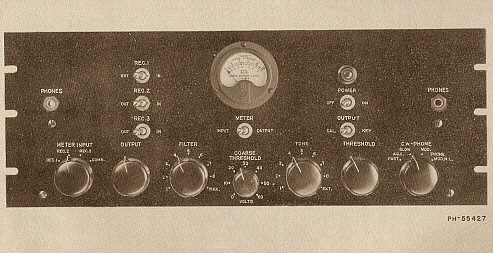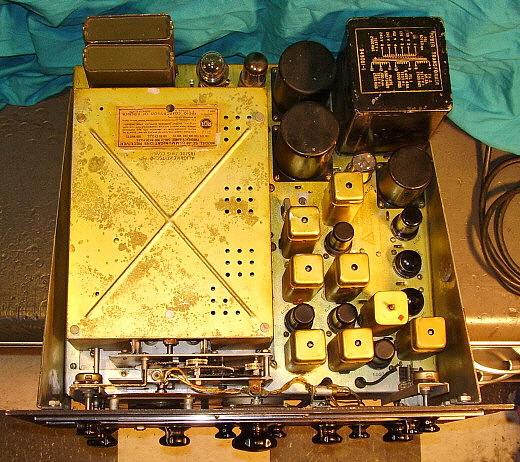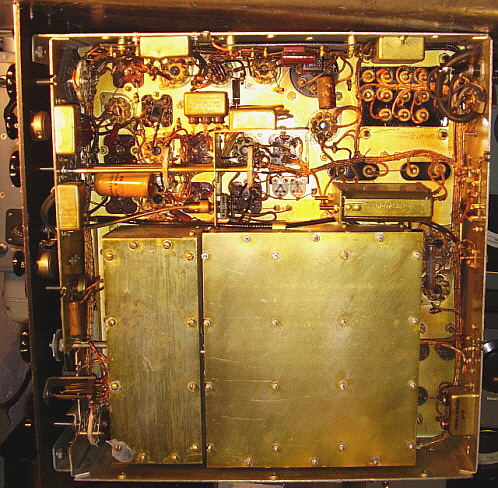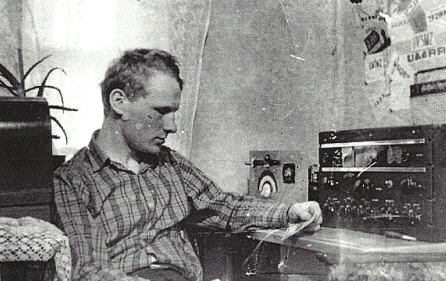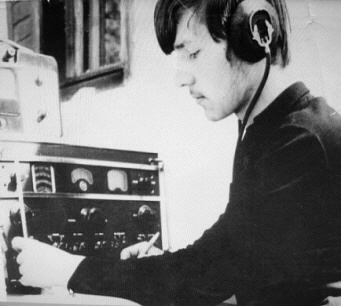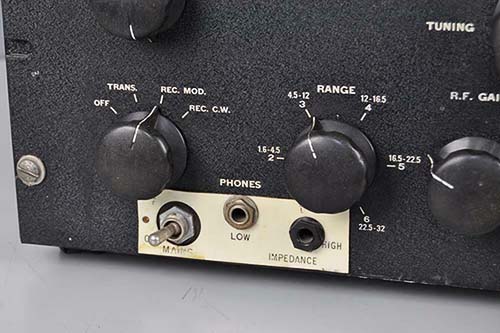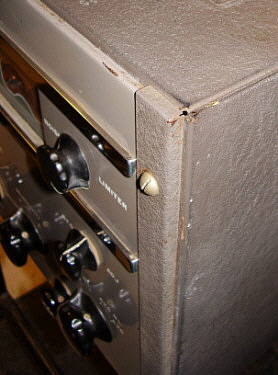|
Alan
Ford VK2DRR - AR-88D, AR-88F
and AR-88LF Serial Number Log
C-00660 -
C-02140 - CAN
C-02328 - USA
C-02739 - CAN
C-03786 - CAN
C-03870 - UK
C-04042 - UK
C-05102 - USA
C-05178 - USA
Alan Ford's AR-88 Serial Number Log updated: November 15,
2010 |
000640 - UK
000793 - Europe
001529 - New Zealand
002385 - France
?02795 - (first digit unreadable, probably 0)
005823 - UK (scrapped)
006238 - USA
007299 - USA
007467 - UK
008421 - R1556A UK RAF mods
010396 - USA (AR-88F)
-10557*** - USA
010739 - USA
-10827*** - USA
-11308*** - R1556A UK RAF mods
-11153*** - USA
-11646*** - UK
-11791*** - USA
012628 - (AR-88F)
012700 - USA (AR88F)
014215 - USA - (highest reported serial number)
100465 - USA
100995 - USA
101032 - UK
101404 - UK |
|
WHRM
- AR-88 Series Serial Number Log
| AR-88D (Camden):
000503 (UK), 000665 (UK), 000912(UK), 001017 (UK),
001097(UK), _01529***(New Zealand),
001656 (UK), 001681 (UK), 001771 (Belgium), 001812(UK), 001982
(Australia, CL mtr), 002185
(Scot/UK), 002385 (France), 002392 (UK), _02579***
(Australia), 003039 (Australia), 003156(UK), 005055(New Zealand), 005112
(USA), 005232
(Sri Lanka), 005401 (France), 005422 (USA-parts), 005470, 005659
(USA), 005953
(UK), 006016 (USA), 007299 (USA), 007543(USA), 008911,
008273(UK), 009351 (UK), 009591
(UK), 009566, 009653 (Australia), 009734 (UK), 009755 (UK),
010143 (UK), 010417 (UK, cab/no CL mtr), 011034(USA, no cab/no
CL mtr), 011514(UK/no CL mtr, engv'd ALU panel w/ OD paint), 013809 (Brazil,
cab/CL mtr), 014090(USA, cab/CL mtr), 014131(Brazil, cab, no CL
mtr), 101517, 10500***(UK),11149***(Germany) 11153*** (USA),
11162*** (NZ), 11650*** (UK, engv'd panel)12083***(USA),
12331*** (USA, no cab/no CL mtr), |
| AR-88D (Bloomington):
100214 (USA),
100341(Italy),
100346 (USA), 100542 (USA), 100809 (Brazil - cab/CL mtr), 101110
(UK),
101495 (UK), 101709 (UK - CL mtr), |
| AR-88F:
010396 (USA), 010878 (So.Africa), 010883 (USA), 011735(USA),
012396(Russia),
012410 (USA), 012637 (USA), 013879 (UK), 014037 (Belgium) |
AR-88LF*:
C-0294? (Czech), C-00013
(So.Africa), C-00195 (UK), C-00309 (UK), 000404?(USA), C-02140 (CAN), C-02739
(CAN), C-02785 (UK),
C-03012 (Australia), C-03561 (CAN),
C-03786 (CAN), C-03897
(USA), C-04399(USA), C-04689 (USA), |
| CR-88:
001018 (Neth), 001116 (USA), 001262 (USA), 001341 (USA), 1695 (CL Mtr,
Cab/USA), C-1260 (from KPH/USA), C001899 (CAN), |
CR-88A:
001268 (USA), 001316 (USA), 001923 (USA), 1518***(USA), 001700 (So.Africa),
"C"001923****(USA) "C"001880****(USA),
001211 (Italy),
002926
(So.Africa), |
| CR-91 (Camden):
050068 (USA), 050190 (UK), 050201 (Brazil), 050535 (UK), 050527
(UK), 050630 (France), 050728
(Italy),
050958 (Brazil) |
| CR-91A (Montreal):
C103 (USA), C176 (CAN), C241M (USA - RCAF rcvr),
C338M(CAN), C367M(CAN), C385(USA), C409
(CAN), 641 (CAN), 864 (CAN), 964 (CAN), 001281?(USA), |
| SC-88**:
139 (USA), 153 (USA), 181 (USA), 205?? (USA), 214 (USA), 234 (USA),
250 (USA), 255 (USA) |
For both lists: Various countries shown after the serial
number indicate where the receiver is now located.
SUB NOTATIONS:
* All AR-88LF were built in Montreal, SNs have "C" prefix and are on
front panel mounted data plate.
** All SC-88 receivers are three digit serial numbers
*** Leading Zero(s) Not Stamped in Chassis
**** "C" is later etched addition and not a factory stamping
? = Unexpected SN or format.
?? = On the SC-88 - "205" stenciled in
yellow on upper right corner of panel but the actual data tag is missing,
so sn:205 is an assumption. |

